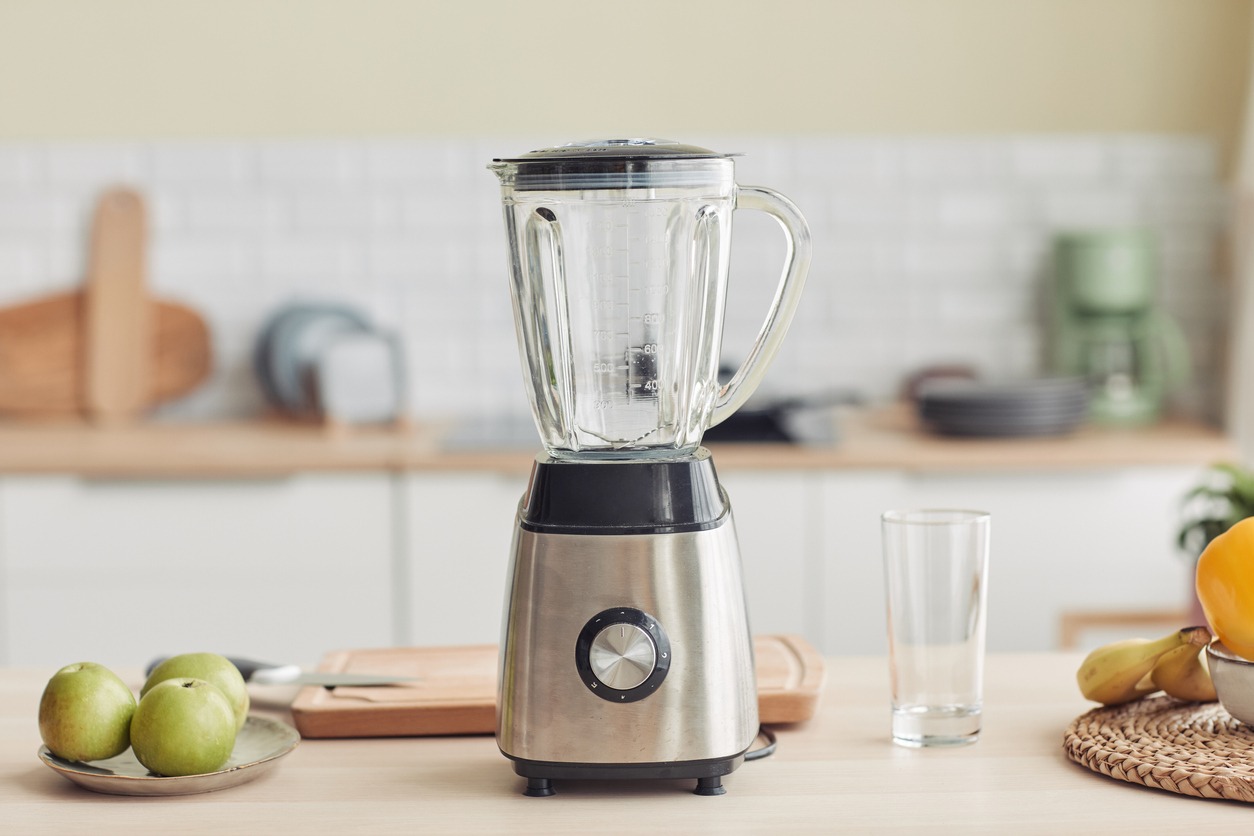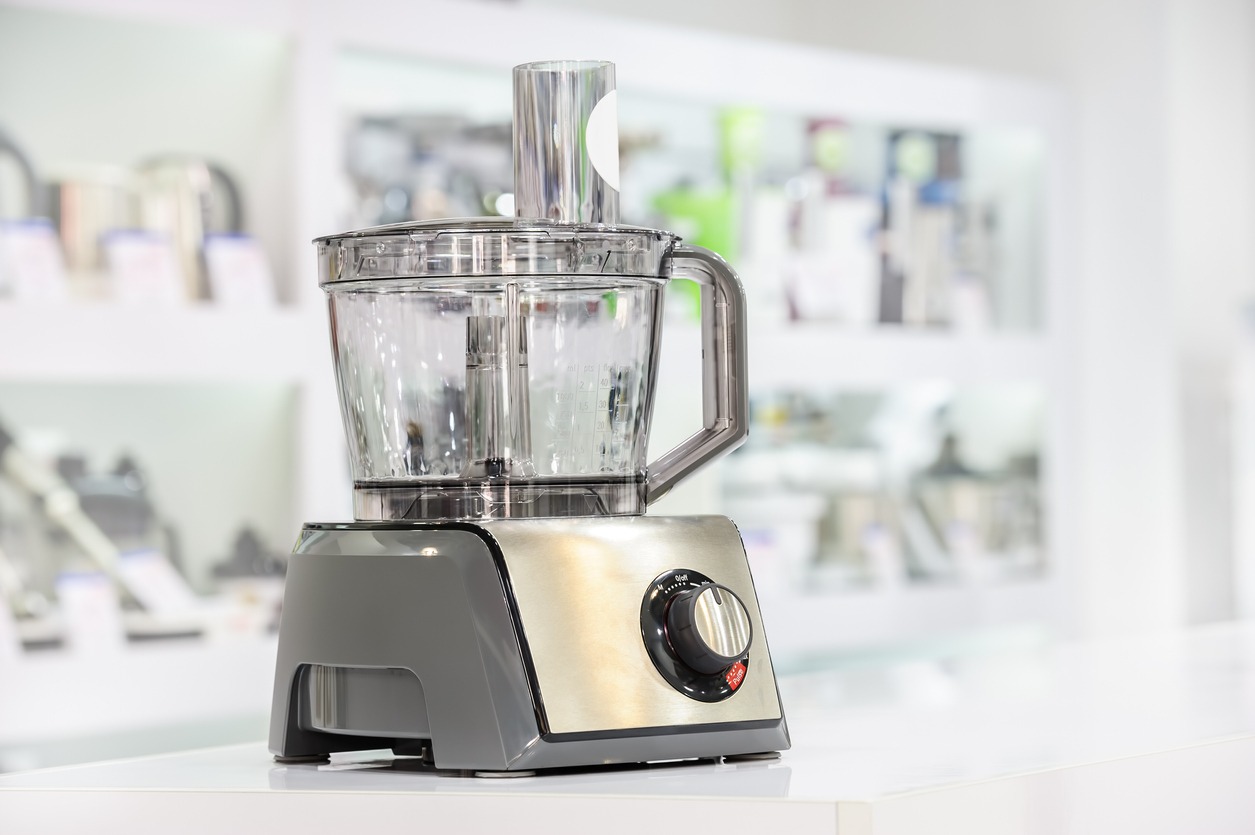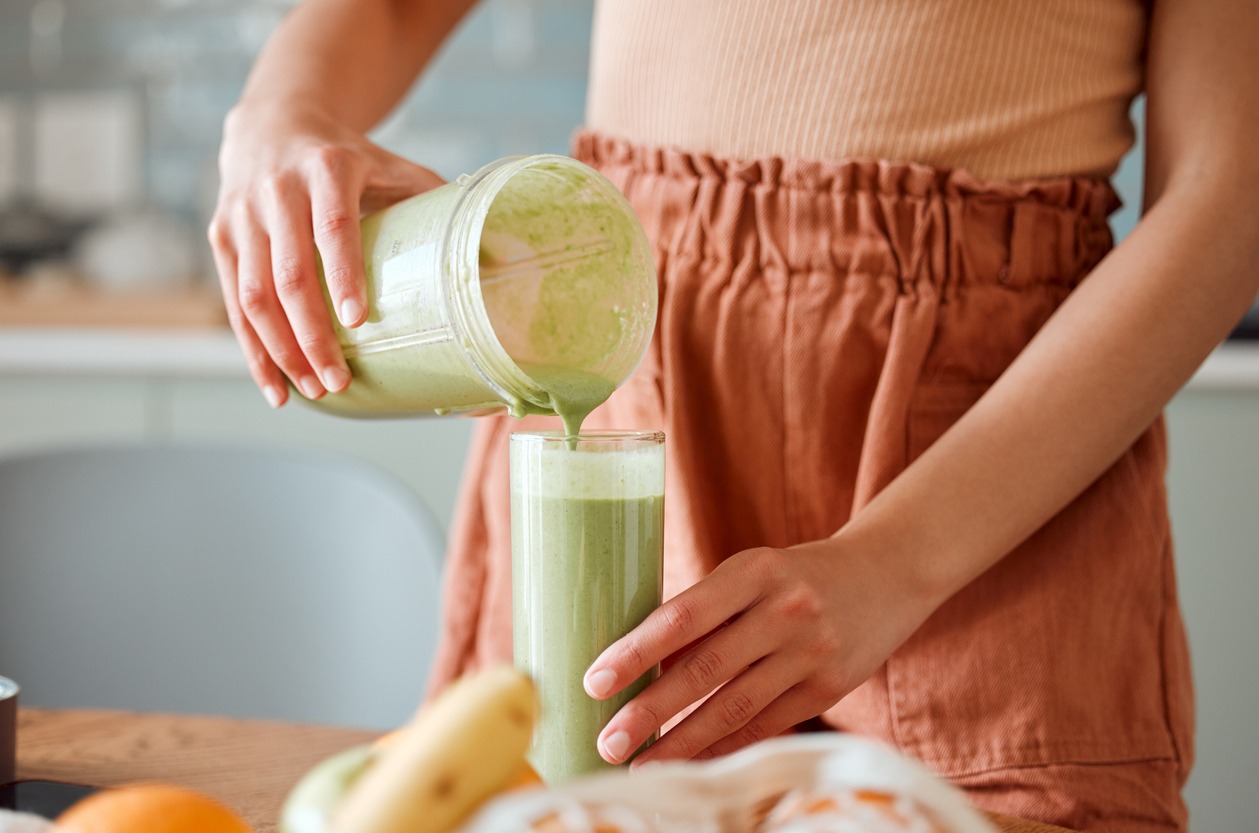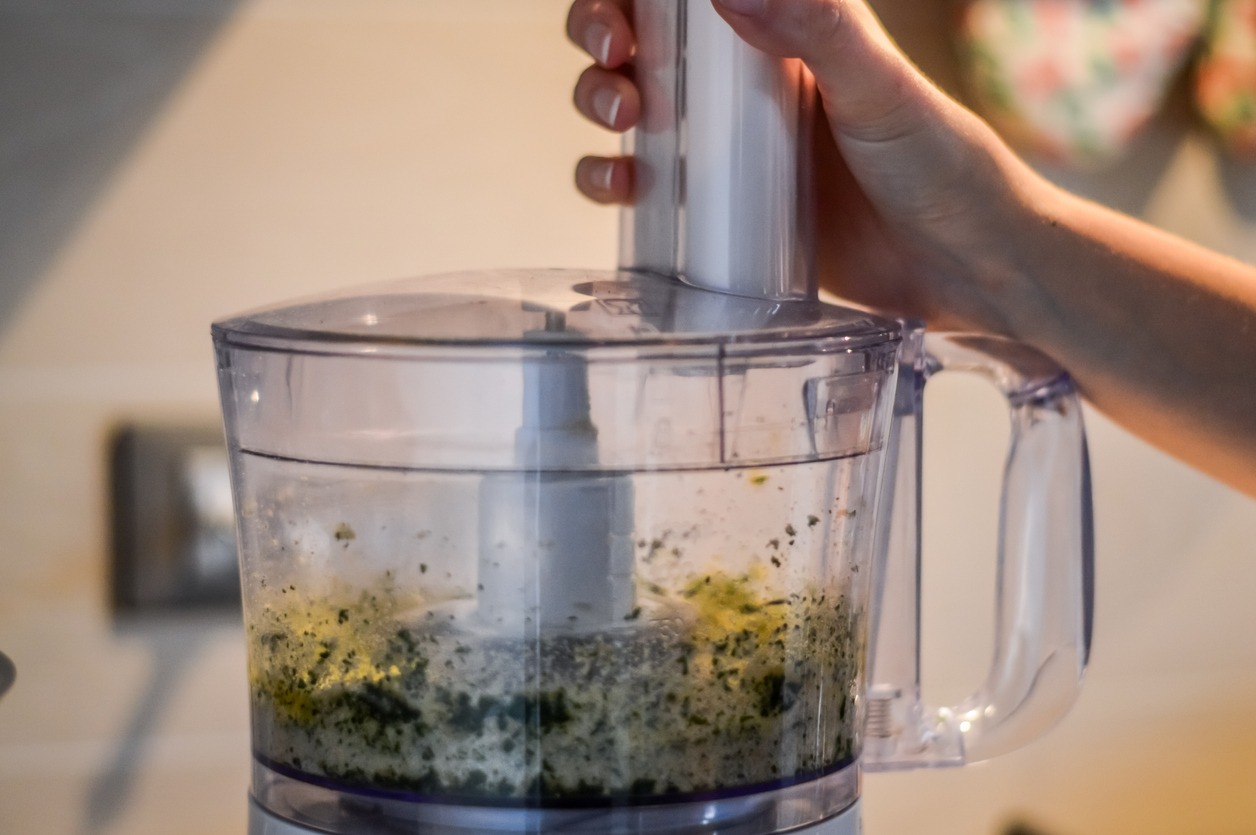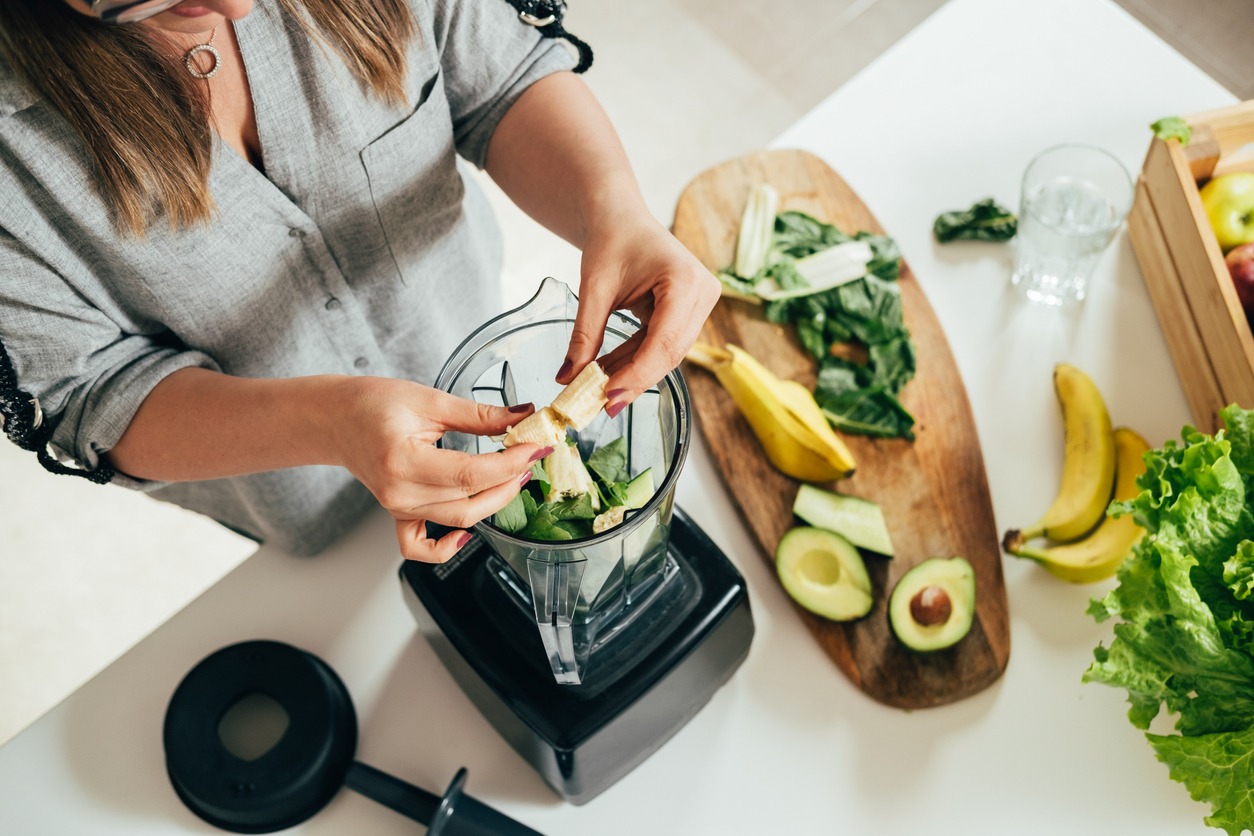Appliances for the kitchen are an essential component of today’s living spaces, as they facilitate the completion of a variety of cooking responsibilities in a shorter amount of time. These devices not only save time but also enable individuals to explore a diverse range of cooking techniques, thereby making the process of preparing meals more convenient and enjoyable for the user.
In the kitchen, two tools that stand out as essential and, at the same time, serve a variety of purposes are the blender and the food processor. Smoothies, shakes, and purees can be easily crafted with the help of blenders, which feature powerful blades that seamlessly combine the ingredients. On the other hand, food processors are particularly effective when it comes to chopping, slicing, and dicing, and they provide a flexible solution for the preparation of food. Individuals are given the ability to make educated decisions regarding their culinary needs when they have a thorough understanding of the distinctive capabilities and features of the relevant appliances.
This article’s objective is to shed some light on the significance of kitchen appliances, with a particular emphasis on the roles that blenders and food processors play in the kitchen. The readers will gain valuable insights into how these tools can elevate their culinary experiences if they delve into the various functions and benefits of these devices. It does not matter if you are a seasoned chef or a novice in the kitchen; if you understand the function of these appliances, you will be able to make your cooking routine more effective and enjoyable, which will ultimately result in a better overall experience in the kitchen.
Understanding Blenders
Definition and Functionality
Overview of Blender Features
Blenders are multipurpose kitchen appliances that can be used for a wide variety of food preparation activities. They typically have a motorized base and a container with sharp blades as their two primary components. Multiple speed settings, a pulse function, and a variety of blending modes are features that are typically included. Some more sophisticated blenders may come with pre-set programs that are tailored to specific jobs.
Primary Uses
Blenders are put to use for a wide variety of purposes, including the following:
- Blending: Bringing together various components to produce uniform consistency.
- Pureeing: Changing the consistency of solid ingredients so that they become more like a liquid.
- Crushing: Reducing in size tough ingredients such as ice, frozen fruit, or other such things.
- Emulsifying: Bringing together two liquids that should not be mixed, such as oil and water.
- Chopping: Reducing the size of the ingredients to more manageable chunks.
Types of Blenders
Countertop Blenders
- Design: The base of these blenders is motorized, and the large container has blades that are fixed in place.
- Capacity: Have capacities that are typically larger, which enables them to be used for the preparation of large batches of food or beverages.
- Common Uses: It is perfect for use in recipes requiring blending, such as smoothies, soups, and sauces.
Immersion Blenders
- Design: A handheld motorized unit with a detachable blending shaft and blades characterizes these appliances, which are also known as hand blenders.
- Versatility: Utilizing a pot, bowl, or cup as the blending container is a breeze with an immersion blender.
- Portability: More convenient in terms of portability and storage space than countertop blenders.
- Common Uses: Useful for blending soups, sauces, and other dishes requiring only a small amount of each ingredient.
Advantages of Blenders
Smoothie Making
- Quick and Convenient: Utilizing a blender makes it simple to prepare nutritious and delectable smoothies by combining various ingredients, such as fruit, vegetables, yogurt, and more.
- Customization: Users can control the ingredients and create smoothies that cater to their individual preferences in terms of flavor.
Crushing Ice
- Versatility: Ice can be effectively crushed in blenders if the blender has powerful blades and an adequate amount of power.
- Refreshing Drinks: Perfect for preparing icy drinks such as frozen cocktails or smoothies.
Blending Soups and Sauces
- Texture Control: Utilizing a blender allows for soups and sauces to attain silky smooth and uniform textures.
- Time Efficiency: The process of pureeing hot ingredients is sped up, and there is no longer a requirement to transfer the ingredients to a separate appliance.
Users can select the most appropriate piece of kitchen equipment to meet their requirements by learning about the various types of blenders and the benefits associated with each.
Exploring Food Processors
Definition and Functionality
Overview of Food Processor Features
Kitchen appliances known as food processors are multi-purpose tools that can be used for a variety of food preparation activities. Generally speaking, they are made up of a motorized base and a variety of attachments, which may include bowls, discs, and blades. Among the most important features are often multiple speed settings, a pulse function, and a variety of attachments tailored to particular jobs.
Primary Uses
In the kitchen, food processors can be put to a variety of uses, including the following:
- Chopping: Reducing the ingredients to bite-sized pieces of a consistent size.
- Slicing: Slicing up various foods such as fruits, vegetables, and other foods into uniform slices.
- Shredding: Reducing firm ingredients such as cheese or vegetables to a finer texture through shredding.
- Grating: Grated foods like cheese and vegetables can be used to make textures ranging from coarse to fine.
- Dough Preparation: Creating bread, pizza, or pastries by combining ingredients and kneading the dough.
Types of Food Processors
Mini Food Processors
- Size: Conveniently sized for smaller amounts and featuring a compact design.
- Capacity: A bowl capacity is typically smaller, making it suitable for processing ingredients in smaller batches.
- Versatility: Ideal for quick chopping and mincing tasks, as well as producing modest quantities of sauces and dips.
Full-Sized Food Processors
- Size: Compared to mini processors, these are larger and pack more power.
- Capacity: Have bowls that are more suitable for handling significant quantities of ingredients because they are larger.
- Versatility: Able to perform a wide variety of tasks associated with food processing, from slicing and chopping to the preparation of dough.
Advantages of Food Processors
Chopping and Slicing
- Size: Larger and with a higher processing capacity than mini processors.
- Capacity: Have bowls that are larger so that you can use them to handle more significant quantities of the ingredients.
- Versatility: Able to perform a diverse array of food processing tasks, ranging from chopping and slicing to the preparation of dough.
Dough Preparation
- Effortless Mixing: Food processors that come equipped with dough blades make the process of kneading and mixing dough much simpler and more efficient.
- Consistency: It makes it easier to get a consistent texture throughout the dough, whether you’re making bread, pizza, or pastries.
Shredding and Grating
- Efficiency: Ingredients such as cheese or vegetables can be grated or shredded by food processors in a fraction of the time it would take to do so manually.
- Versatility: The range of textures that can be achieved thanks to the availability of a variety of shredding and grating attachments is expanded as a result.
Users can select the appropriate kitchen appliance based on their specific chopping, slicing, or dough-preparation needs when they have a solid understanding of the characteristics and categories of food processors. This is true regardless of whether the user is looking to cut food quickly, slice it, or prepare dough.
Key Differences Between Blenders and Food Processors
Blade Design and Purpose
Blenders
- Typically have larger and more robust blades.
- Designed for liquefying and blending ingredients into smooth textures.
- Ideal for tasks like making smoothies, soups, and crushing ice.
Food Processors
- Include a wide variety of cutting blades and attachments, such as slicing discs, shredding discs, and chopping blades.
- Designed to perform a variety of precise cutting tasks including chopping, slicing, and shredding.
- Designed for use in the preparation of a wider variety of foods, including the mixing of dough.
Capacity and Size
Blenders
- Have larger pitchers or containers most of the time.
- Appropriate for the preparation of larger quantities of recipes that call for liquids, such as smoothies or soups.
Food Processors
- Available in a range of sizes, from miniature to full-sized models, depending on the product.
- Can deal with varying amounts of solid food, making them flexible for use in a variety of recipes.
Motor Power
Blenders
- Typically fitted with robust motors to handle demanding tasks such as crushing ice and blending frozen produce.
- Developed for use in situations that call for high-speed blending.
Food Processors
- Although the power of the motors can vary, they are almost always designed with precision and control rather than high-speed blending in mind.
- It is ideally suited for activities such as slicing, chopping, and kneading.
Speed Settings
Blenders
- Frequently consists of a pulse function as well as multiple speed settings.
- Blending at high speeds is a common option because it improves efficiency.
Food Processors
- It is common for there to be a pulse function in addition to variable speed settings, which allows for more precise control.
- Instead of emphasizing high-speed blending, controlled processing is emphasized for cutting tasks.
Versatility in Functions
Blenders
- A high-speed blender that is primarily intended for use with liquids.
- It works wonderfully for pureeing soups and making smoothies and shakes.
Food Processors
- Designed to perform a wider variety of tasks, such as chopping, slicing, shredding, and the preparation of dough.
- More suited for tasks involving foods that are solid or semi-solid in consistency.
By gaining an understanding of these key distinctions, users will be better equipped to select the appropriate appliance to meet their requirements in the kitchen. Food processors are superior to blenders when it comes to tasks that require precision cutting and offer more versatility when it comes to working with a variety of ingredients. Blenders are great for making liquid-based recipes and blending at a high speed.
Choosing the Right Appliances for Your Needs
Assessing Your Cooking Habits
Blender
- Suitability: If you frequently prepare smoothies, shakes, or soups, you should invest in a blender.
- Liquid-based Recipes: Perfect for jobs that require high-speed blending and the use of liquids.
- Frequency of Use: Ideally suited for repeated use in the preparation of beverages and dishes that rely heavily on liquids.
Food Processor
- Suitability: If you do a variety of different things to prepare food, you should consider purchasing a food processor.
- Solid Ingredients: Designed to facilitate chopping, slicing, and shredding, as well as the preparation of dough.
- Versatility: If blending is only one of your cooking needs, you may want to consider purchasing an appliance that can handle a wider variety of tasks.
Considering Kitchen Spaces
Blender
- Size: Blenders, particularly countertop models, are known to take up more space than other kitchen appliances.
- Storage: Take into account the amount of space you have to store the blender and all of its attachments.
Food Processor
- Size: Mini food processors take up less room and are therefore a better option for kitchens with limited square footage.
- Storage: It is recommended that you evaluate the amount of storage space available in your kitchen before purchasing a full-sized food processor.
Budget Considerations
Blender
- Cost: There is a wide range of prices for blenders, with higher-end models typically having more capabilities.
- Features: Check to see if the features of the blender are compatible with your spending plan and requirements.
Food Processor
- Cost: In the same way, the price of food processors can vary greatly depending on their capacity and the functions they offer.
- Value: Think about the value that the food processor brings to the table about the activities that you intend to use it for.
Desired Features and Functions
Blender
- Blade Design: Concentrate on finding blenders with effective blade designs if you primarily need to create smooth textures.
- Speed Settings: Think about how many different speed settings it has and whether or not it has a pulse function.
Food Processor
- Attachments: Examine the various attachments that are at your disposal, such as slicing discs, chopping blades, and shredding discs.
- Speed Control: When looking for precision, you should look for settings for variable speeds as well as a pulse function.
Tips:
- Consider purchasing a compact food processor or a blender that has multiple functions if storage space is at a premium.
- Put the features that are most relevant to the things you do most often in the kitchen first.
- Read reviews written by other customers to get an idea of how reliable and effective different models are that fall within your price range.
In the end, picking the right appliance requires striking a balance between your preferred methods of cooking, the amount of space available in your kitchen, the limitations imposed by your financial situation, and the features that are necessary to fulfill your culinary requirements.
Common Misconceptions
Blurring Boundaries Between Blenders and Food Processors
- Misconception: Taking for granted that blenders and food processors are capable of performing the same functions.
- Reality: Blenders and food processors have distinct designs and advantages, even though some of their functions are similar to one another.
- Clarification: Because they are designed to combine liquids at a high rate of speed, blenders are ideally suited for making smoothies and soups. On the other hand, food processors are unparalleled when it comes to dicing, slicing, and working with ingredients that are solid or semi-solid.
Overestimating the Versatility of One Appliance Over the Other
- Misconception: The mistaken belief that one piece of equipment can eliminate the need for another.
- Reality: Blenders and food processors are two kitchen appliances that are complementary to one another and serve separate but related functions.
- Clarification: Food processors excel at tasks like chopping, slicing, and shredding, while blenders are best suited for liquid-based recipes and high-speed blending. Blenders are also great for making smoothies. Depending on how frequently one cooks, having both of these appliances can serve as a comprehensive answer to a variety of cooking-related problems.
Tips to Avoid Misconceptions
- Understand the Strengths: Recognize the distinct advantages offered by each appliance, placing more of an emphasis on the high-speed blending capabilities of blenders and the precise chopping capabilities of food processors.
- Assess Specific Needs: When deciding which appliance (or combination of appliances) would work best for your kitchen, it is important to take into account both your typical cooking techniques and the kinds of dishes that you most frequently make.
- Research Models: Investigate the features of various models of blenders and food processors to ensure that they are suitable for the tasks you intend to perform with them.
Users can make educated decisions when selecting kitchen appliances and maximize the usefulness of those appliances in the realm of culinary preparation by dispelling common misconceptions and gaining an understanding of the distinct roles that blenders and food processors play in the kitchen.
Recipes and Tasks Suited for Each Appliance
Blender-Friendly Recipes
Smoothies and Drinks
- Ingredients: Fruits, either fresh or frozen, yogurt, a liquid (milk, juice, or water), and additional ingredients, such as protein powder or sweeteners, can be added as desired.
- Blender Use: Blending at a high speed results in a texture that is silky smooth and thoroughly combined.
- Tips: Ice can be added for a refreshing chill, and frozen fruits can be used to thicken the drink.
Soups and Purees
- Ingredients: Vegetables that have been cooked, broth, various seasonings, and any additional ingredients that the cook may desire.
- Blender Use: The process of blending hot ingredients to create purees or soups that are silky smooth and creamy.
- Tips: Before blending, give hot ingredients some time to slightly cool down to prevent pressure from building up.
Food Processor-Friendly Recipes
Chopped Salads
- Ingredients: Nuts, cheese, and a selection of vegetables (including lettuce, tomatoes, and cucumbers, among others).
- Food Processor Use: Make use of chopping blades to ensure that the salad ingredients are chopped in a timely and consistent manner.
- Tips: To avoid overprocessing and achieve the desired size, pulse the ingredients.
Pizza Dough
- Ingredients: Flour, water, yeast, olive oil, and salt are the ingredients required.
- Food Processor Use: Developing a uniform and elastic consistency in the dough by kneading and mixing it.
- Tips: Use a food processor and stick to a specific pizza dough recipe to get the most out of the time spent preparing the dough.
Choosing the Right Appliance
- Blender: It works wonderfully for recipes that call for high-speed blending, particularly those that involve liquids or semi-liquid ingredients.
- Food Processor: Processing that is accurate and under control, making it an excellent choice for tasks like chopping, slicing, and the preparation of dough.
Additional Tips:
- Experiment with Both: Although some dishes work best with a particular cooking method or tool, expanding one’s culinary horizons through experimentation with a variety of methods can lead to novel and exciting dishes.
- Multi-Appliance Approach: Consider purchasing a blender in addition to a food processor so that you can handle a diverse range of preparation tasks in the kitchen. This will give you the most flexibility.
Conclusion
The process of making decisions regarding kitchen appliances is highly individualized, as it is dependent on the individual’s cooking habits, lifestyle, and the space available in the kitchen. Choosing between a blender and a food processor, or even both of them, is a decision that should be guided by an evaluation of your specific needs, such as the kinds of recipes you frequently prepare and the amount of food you typically work with. Take into account the amount of space and storage that is available in the kitchen, as well as the dimensions and layout of the appliances. Your budget is another essential component, and it is essential to find a happy medium between the features you want and the price you’re willing to pay for them. A decision that is tailored to your specific needs takes into account the specific demands of your culinary routine. This helps to ensure that the selected appliances will integrate smoothly into your kitchen and improve the quality of your cooking experience as a whole.
Finding the right appliances for your kitchen requires striking a careful balance between functionality, available space, and your individual preferences. A well-equipped kitchen will typically include both blenders and food processors. These two types of appliances each bring something unique to the table. Food processors offer greater precision than blenders when it comes to chopping, slicing, and the preparation of dough. Blenders are best used for making smooth textures with liquids and frozen foods. The most important thing is to understand that these home appliances do not replace one another but rather complement one another. Both are useful additions to a flexible kitchen because they offer a complete answer to a wide variety of problems that can arise in the kitchen. In the end, the best appliance selection is the one that is aligned with your cooking habits. This allows you to bring your favorite recipes to life in a way that is both efficient and creative, while also making the most of the space and resources in your kitchen.


